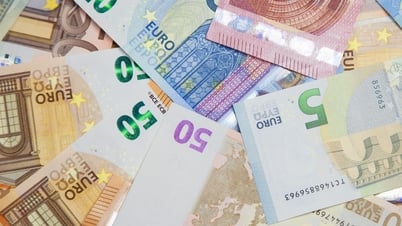The main reason comes from the fact that concerns about supply shortages have eased, after the US and Iran showed positive signs in nuclear negotiations.
Reuters reported that the two countries will continue discussions this week to reach a new agreement, as President Donald Trump vowed to take strong action if Iran does not reach an agreement to prevent the development of nuclear weapons.
Oil prices rose sharply last week, supported by a number of factors including the US tightening sanctions on Iran, OPEC announcing deeper production cuts, a weaker US dollar and hopes for a US-EU trade deal. As a result, oil prices recovered nearly half of the decline of the previous two weeks and climbed back from a four-year low.
But the recovery is under threat from new uncertainties. Several countries have scheduled bilateral trade talks with the US this week, with the aim of removing the tariffs that have weighed on the global economy . Meanwhile, US-China relations remain tense, although Beijing has said it is always ready to negotiate on an equal footing and with mutual respect.
Investors will also be closely watching key US economic data this week, such as manufacturing and services PMI and weekly jobless claims, to predict the next move by the US Federal Reserve (Fed) on interest rates. In contrast to the ECB, which just cut interest rates by 25 basis points and left open the possibility of further easing, the Fed is keeping interest rates at 4.25% - 4.5% and is temporarily waiting to see how the trade and tariff situation develops.
On the geopolitical front, a temporary ceasefire between Russia and Ukraine over Easter has been accused of being violated by both sides, further complicating US efforts to find a lasting peace in the region.
Meanwhile, the World Trade Organization (WTO) has lowered its forecast for global trade growth this year from +3% to -0.2%, and warned that if the US imposes reciprocal tariffs, world trade could fall by up to -1.5%. This has raised concerns that energy demand will decrease in the coming time, making it difficult for domestic gasoline prices to maintain a three-session decline streak.
Domestic gasoline prices are currently being applied according to the latest adjustment period from April 21. Retail prices are being kept stable at the following levels: E5 RON 92 gasoline does not exceed VND18,498/liter, RON 95-III gasoline is VND18,856/liter. Diesel is sold at a maximum of VND17,037/liter, kerosene at VND17,184/liter and fuel oil at no more than VND15,960/kg.
According to the plan, the Ministry of Finance - Ministry of Industry and Trade will continue to adjust prices in the operating period on April 24. In the context of the world oil price increasing again last week, it is likely that domestic gasoline prices will also increase. However, if the world market continues to decrease sharply in the first sessions of the week, domestic prices may have the opportunity to decrease for the third consecutive time.
In the most recent adjustment, the price of E5 RON 92 gasoline decreased by VND384/liter, and RON 95-III gasoline decreased by VND351/liter. Oil products such as diesel and kerosene also decreased slightly, while fuel oil was the only type that recorded an increase, by VND58/kg.
AD Advertisement
Source: https://baonghean.vn/gia-xang-dau-hom-nay-21-4-2025-xu-huong-giam-manh-10295585.html



![[Photo] T&T 1 and Ho Chi Minh City 1 People's Police Teams won the men's and women's team championships](https://vphoto.vietnam.vn/thumb/1200x675/vietnam/resource/IMAGE/2025/5/22/39db06ae67cb4001b7a556e8d9a56d07)

![[Photo] General Secretary To Lam chairs a working session with the Central Internal Affairs Commission](https://vphoto.vietnam.vn/thumb/1200x675/vietnam/resource/IMAGE/2025/5/22/3b7790f499da45b2803d8ae253207ef1)
![[Photo] Press delegation meeting to visit Truong Sa and DK1 Platform](https://vphoto.vietnam.vn/thumb/1200x675/vietnam/resource/IMAGE/2025/5/22/6b8d232877ec421a9e8187d83b9f8006)

![[Photo] Prime Minister Pham Minh Chinh chairs meeting on draft Resolution of National Assembly on International Financial Center in Vietnam](https://vphoto.vietnam.vn/thumb/1200x675/vietnam/resource/IMAGE/2025/5/22/d398664ff1a140629169ea5a24e1b4d0)



















![[Infographics]: Which exceptional cases will be issued paper Health Insurance cards from June 1, 2025?](https://vphoto.vietnam.vn/thumb/402x226/vietnam/resource/IMAGE/2025/5/22/d05f5a2fb7c34b69a51e0dbe5c5f4d18)






















































![[Podcast] Week introducing more than 500 OCOP products in Hanoi](https://vphoto.vietnam.vn/thumb/402x226/vietnam/resource/IMAGE/2025/5/22/d144aac2416744718388dbae3260e7fd)





Comment (0)